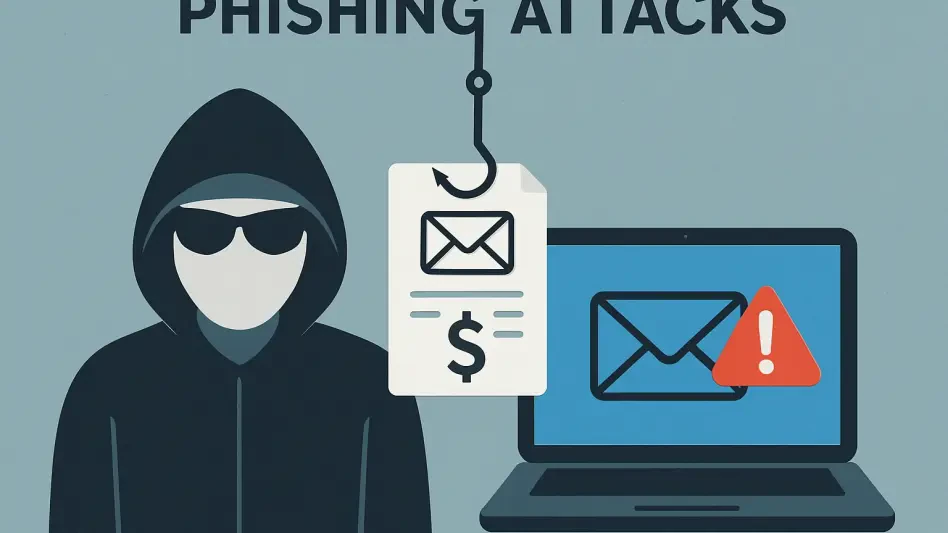Imagine a scenario where a seemingly legitimate government website prompts a user to enter sensitive information, only to later discover that the site was a meticulously crafted fake designed to steal personal data. This unsettling reality is becoming increasingly common as cybercriminals harness the power of generative AI, or GenAI, to create phishing attacks of unprecedented sophistication. These tools, originally developed to enhance productivity and creativity, are now being weaponized to replicate official portals with alarming precision, tricking even the most cautious individuals. The rise of such advanced tactics poses a significant threat to both personal and financial security, as attackers exploit trust in familiar online environments. This troubling trend underscores the dual nature of technological innovation, where benefits for legitimate users are mirrored by new opportunities for malicious actors. As GenAI continues to evolve, understanding its role in cybercrime becomes essential for developing effective defenses against these deceptive schemes.
The Mechanics of GenAI-Driven Phishing
The technical prowess of GenAI in crafting phishing websites is a game-changer for cybercriminals seeking to deceive unsuspecting users. By utilizing advanced algorithms, these tools can replicate the design and functionality of legitimate government portals with startling accuracy, often mimicking intricate details such as logos, layouts, and even user interfaces. Campaigns observed in regions like Brazil have shown how attackers clone sites of institutions such as the State Department of Traffic, creating pages that are nearly indistinguishable from the originals. What sets these apart from traditional phishing attempts is the presence of AI-generated code signatures, including the use of modern frameworks like TailwindCSS for styling and overly detailed comments that hint at automated creation. These elements reveal a shift in strategy, prioritizing visual authenticity over the obfuscation typically seen in older phishing kits. The result is a trap that lures victims with a false sense of security, making it harder to spot the deception before sensitive data is compromised.
Beyond the surface-level mimicry, GenAI enhances the phishing process through staged data collection that mirrors authentic procedures. In many cases, fraudulent sites request specific information, such as taxpayer IDs or residential details, often validating inputs through backend APIs to build trust with users. This calculated approach has been evident in attacks targeting Brazil’s instant payment system, Pix, where victims are misled into paying small fees under false pretenses, believing they are fulfilling legitimate obligations. The use of non-functional UI elements, such as unclickable buttons or static links, serves as a subtle clue to the artificial nature of these pages, though such indicators often go unnoticed by the average user. The sophistication of these attacks lies not just in their appearance but in their ability to simulate real interactions, exploiting human tendencies to trust familiar systems. As these methods become more refined, the potential for widespread financial loss or data theft grows, highlighting the urgent need for heightened awareness and advanced detection mechanisms.
The Broader Implications of Accessible Cybercrime Tools
One of the most concerning aspects of GenAI’s role in phishing is how it lowers the barrier to entry for cybercriminals, democratizing access to advanced attack methods. Unlike traditional phishing campaigns that required significant technical expertise to design convincing fakes, GenAI tools enable even novice attackers to generate professional-grade replicas in a fraction of the time. This accessibility means that a wider pool of malicious actors can now execute sophisticated scams, increasing the overall volume and variety of threats in the digital landscape. The financial impact per victim may currently appear modest—often involving small transactions around $16 USD—but the scalability of these attacks poses a far greater risk. If left unchecked, such tactics could evolve to target larger sums or more sensitive data, amplifying the potential for widespread harm. This trend signals a critical shift in cybercrime, where technological advancements originally meant for progress are repurposed to exploit vulnerabilities on a massive scale.
Compounding the issue is the strategic use of SEO poisoning by attackers to boost the visibility of their fraudulent sites on search engines. By manipulating search results, cybercriminals ensure that their fake portals appear at the top of relevant queries, significantly increasing the likelihood of ensnaring victims searching for legitimate government services. This tactic, combined with the visual and functional authenticity provided by GenAI, creates a perfect storm of deception that preys on trust and urgency. Security researchers have noted that while the immediate monetary gains from these attacks may be limited, the long-term implications are far more severe, as stolen data can be used for identity theft or sold on dark web markets. The rapid evolution of these techniques underscores the challenge faced by cybersecurity professionals in staying ahead of threats that leverage cutting-edge technology. As GenAI becomes more integrated into various tools, finding a balance between innovation and security remains a pressing concern for both individuals and organizations.
Strengthening Defenses Against Evolving Threats
Looking back, the cybersecurity community grappled with an escalating wave of GenAI-driven phishing attacks that redefined the landscape of digital deception. These incidents, particularly those targeting government websites in regions like Brazil, demonstrated how technology could be twisted to serve malicious ends, creating near-perfect replicas that deceived countless users. Reflecting on those challenges, it became evident that traditional security measures were no longer sufficient to counter the precision and scalability of such threats. The adoption of a Zero Trust architecture emerged as a pivotal response, ensuring that every access request was rigorously verified, regardless of origin. This approach, championed by security experts, provided a robust framework to mitigate risks posed by sophisticated phishing schemes.
Moving forward, actionable steps proved essential in fortifying defenses against these evolving cyberattacks. Organizations and individuals alike were encouraged to prioritize awareness of phishing indicators, such as non-functional UI elements or suspicious domain names, as a first line of defense. Leveraging multilayered security platforms that identified threats under specific labels like HTML.Phish.AIGen offered additional protection, enabling proactive detection and response. Moreover, staying informed about indicators of compromise, including specific domains linked to phishing campaigns, empowered users to avoid potential traps. As the battle against GenAI-fueled cybercrime continued, fostering collaboration between technology developers and security professionals became a cornerstone for anticipating future risks and safeguarding digital trust in an increasingly complex online environment.








